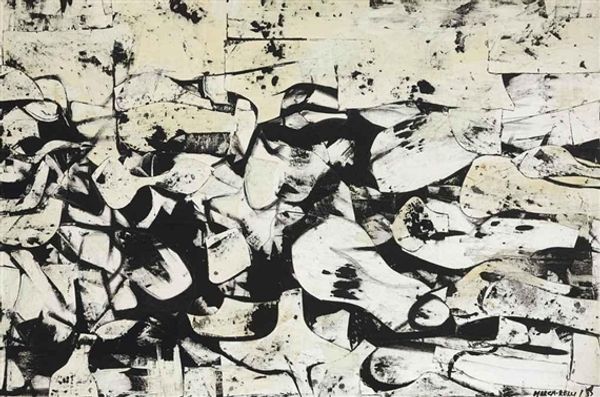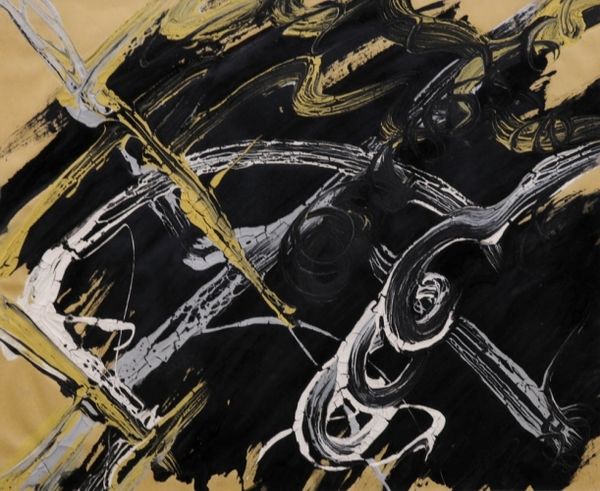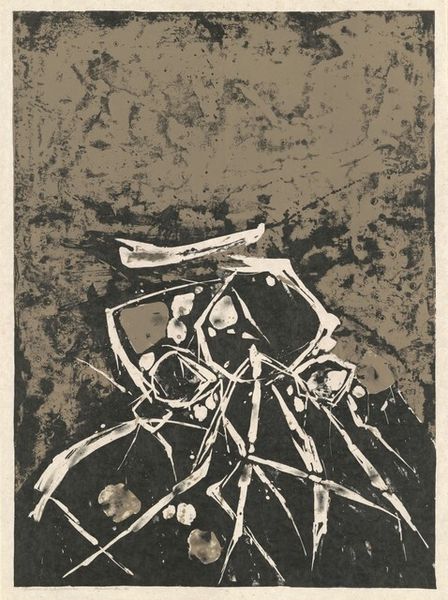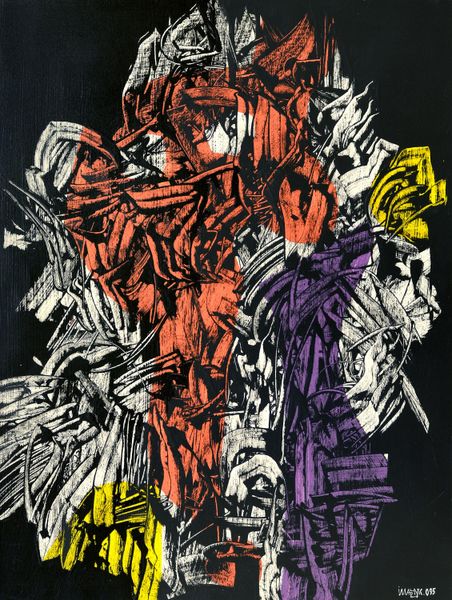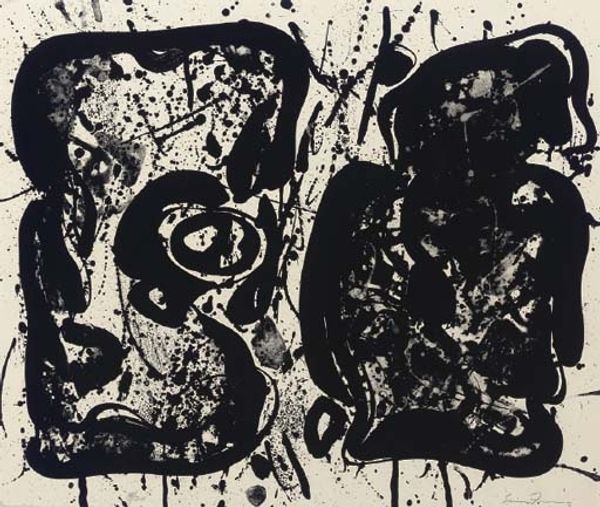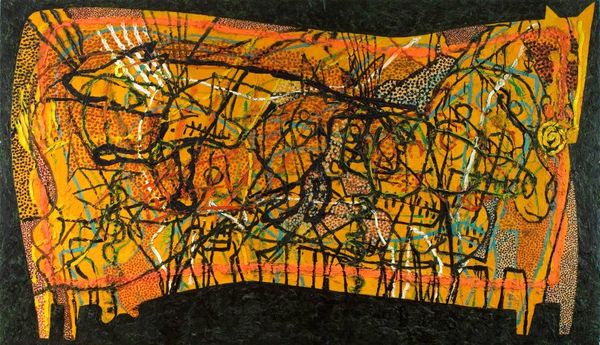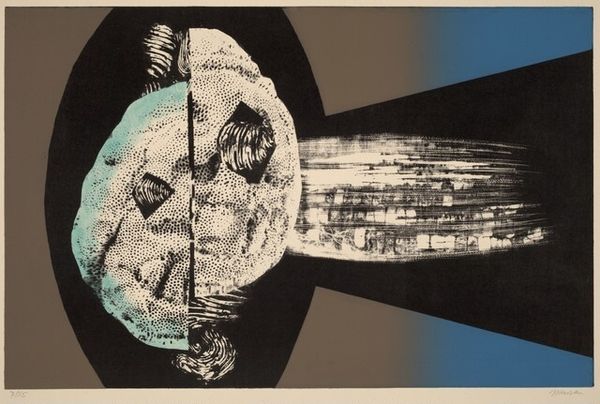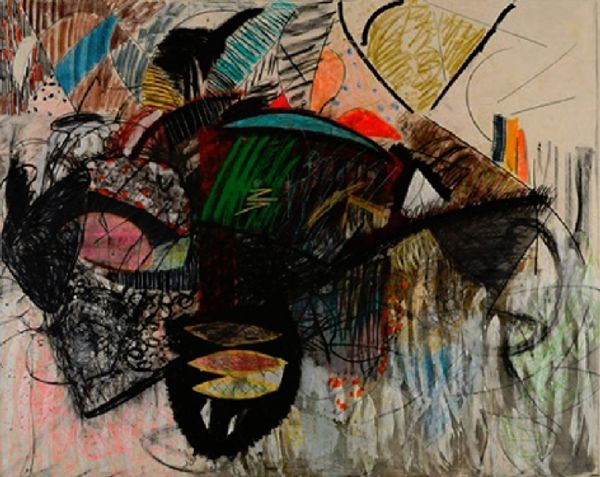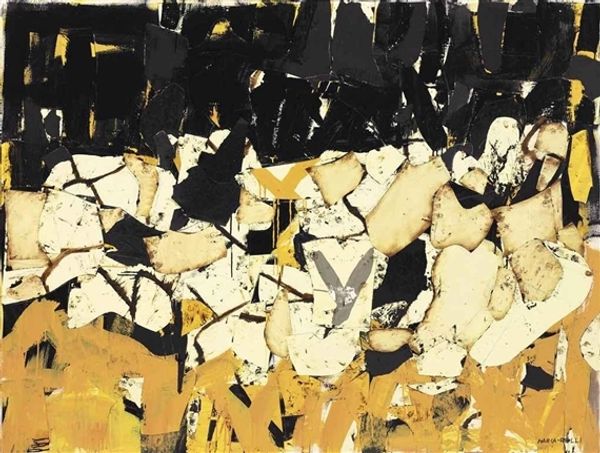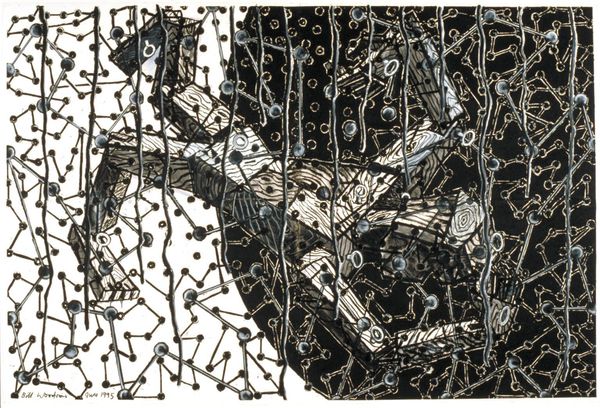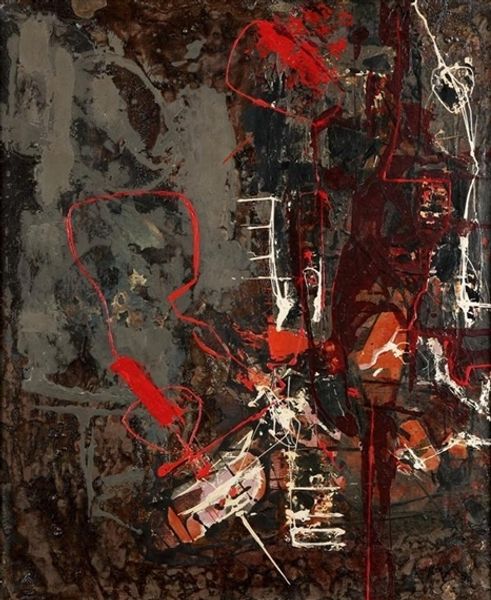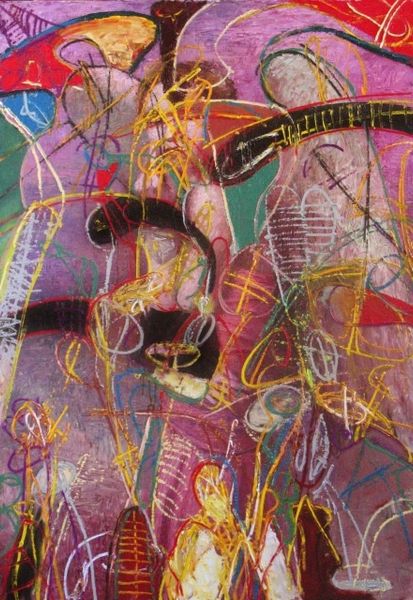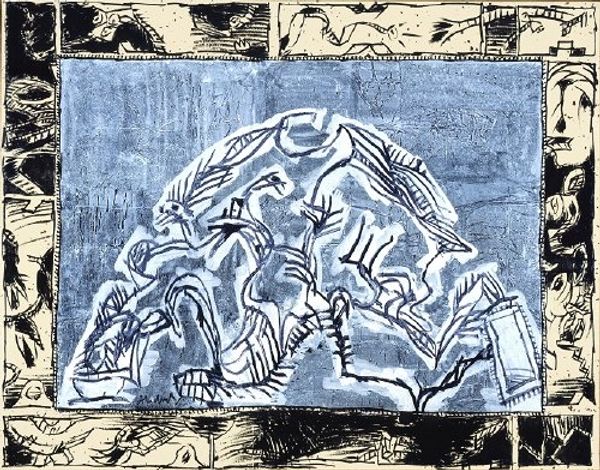
acrylic-paint
#
abstract expressionism
#
acrylic-paint
#
figuration
#
neo expressionist
#
acrylic on canvas
#
neo-expressionism
#
abstraction
#
line
#
erotic-art
Copyright: Piroska Szanto,Fair Use
Curator: Looking at "Lovers (Bone Music)," an acrylic on canvas created by Piroska Szanto in 1970, my immediate reaction is drawn to the dynamism conveyed through such stark colors. What strikes you first about the artwork? Editor: The title really informs my experience here. There's something spectral about the composition; I see interlocking figures rendered almost like anatomical drawings, yet they resonate with human warmth, challenging the notion that skeletons can only be terrifying. Curator: Precisely. It's compelling how Szanto integrates elements of both neo-expressionism and abstract expressionism. While formally abstract, the underlying erotic theme is palpable, pointing toward an exploration of bodies under pressure. It seems this painting arose within complex cultural frameworks for erotic art. Editor: I'm curious about this 'bone music'. This visual language of bone evokes a primitive symbolism – a nod perhaps to the human form's fragility, and in counterpoint to desire and eroticism; and a powerful representation of primal connection across cultures and generations. Are there particular resonances in Hungarian art or folklore? Curator: Hungarian folklore often blends pagan and Christian symbols. While I can't connect this directly to Hungarian lore, I notice a convergence of modern expressionism with archaic iconography. The era – the 1970s – was politically turbulent; I speculate the piece presents a bold statement during heightened censorship of the body. Editor: Absolutely. In the realm of erotic art, a society’s rules always whisper through the artist's visual grammar. Looking closely, notice how some white lines accentuate certain... well, suggestive curves. Beyond simple portrayal, these lines feel almost celebratory, challenging restrictive definitions of the human form, especially during the Eastern Bloc era. Curator: What seems most evocative for me is how Szanto challenges not just sexual mores of the era, but traditional gender roles through these semi-abstract figures; they offer us both ambiguity and agency within what otherwise may feel a stark and uncompromising narrative. Editor: For me, I'll remember "Lovers (Bone Music)" as an encounter. The visual echoes continue, inviting reflections on how symbols – especially erotic ones - remain vivid records across cultural shifts and individual identities. A true piece for both contemplation, and hopefully celebration.
Comments
No comments
Be the first to comment and join the conversation on the ultimate creative platform.
